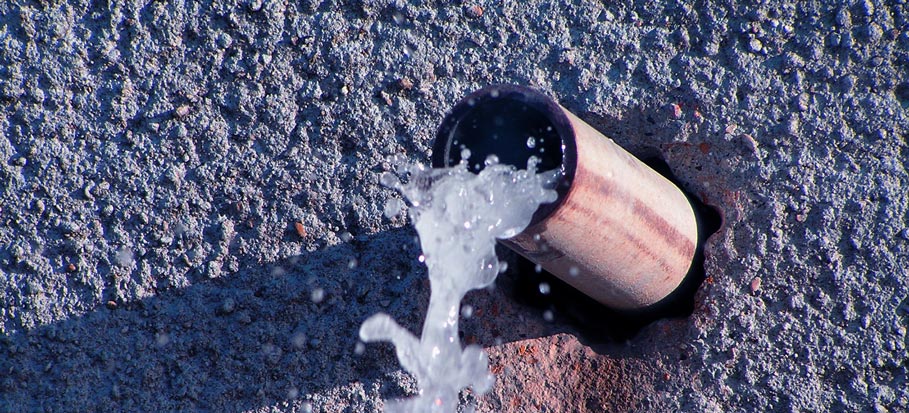Finding Hidden Water Line Leaks: Six Smart Hacks
Finding Hidden Water Line Leaks: Six Smart Hacks
Blog Article
Just how do you really feel when it comes to Locating water leaks?

Early detection of leaking water lines can reduce a possible catastrophe. Some little water leaks might not be noticeable.
1. Analyze the Water Meter
Every home has a water meter. Examining it is a proven manner in which assists you discover leakages. For starters, turn off all the water resources. Ensure nobody will certainly flush, make use of the faucet, shower, run the cleaning machine or dishwashing machine. From there, most likely to the meter as well as watch if it will alter. Given that nobody is utilizing it, there must be no movements. That indicates a fast-moving leakage if it relocates. If you find no changes, wait an hour or two as well as check back once again. This means you may have a slow-moving leak that might also be underground.
2. Check Water Usage
Analyze your water expenses and also track your water intake. As the one paying it, you must see if there are any disparities. If you identify sudden changes, regardless of your usage being the same, it means that you have leaks in your plumbing system. Remember, your water bill should drop under the very same range monthly. An unexpected spike in your expense suggests a fast-moving leakage.
A consistent increase every month, even with the very same practices, shows you have a slow-moving leak that's additionally slowly rising. Call a plumber to completely examine your building, especially if you really feel a cozy location on your floor with piping below.
3. Do a Food Coloring Test
When it comes to water usage, 30% comes from toilets. If the color in some way infiltrates your bowl throughout that time without flushing, there's a leakage in between the storage tank and also bowl.
4. Asses Exterior Lines
Don't forget to check your outdoor water lines too. Needs to water leak out of the connection, you have a loosened rubber gasket. One small leakage can lose lots of water and surge your water bill.
5. Check and also Evaluate the Scenario
Property owners need to make it a behavior to check under the sink counters as well as also inside closets for any bad odor or mold and mildew growth. These two red flags indicate a leak so punctual attention is called for. Doing regular assessments, also bi-annually, can conserve you from a significant issue.
Examine for stainings and also compromising as many appliances and pipes have a life span. If you believe dripping water lines in your plumbing system, don't wait for it to escalate.
Early detection of leaking water lines can minimize a possible disaster. Some little water leaks might not be visible. Examining it is a surefire means that aids you find leakages. One small leak can waste loads of water and increase your water expense.
If you think dripping water lines in your plumbing system, don't wait for it to escalate.
WARNING SIGNS OF WATER LEAKAGE BEHIND THE WALL
PERSISTENT MUSTY ODORS
As water slowly drips from a leaky pipe inside the wall, flooring and sheetrock stay damp and develop an odor similar to wet cardboard. It generates a musty smell that can help you find hidden leaks.
MOLD IN UNUSUAL AREAS
Mold usually grows in wet areas like kitchens, baths and laundry rooms. If you spot the stuff on walls or baseboards in other rooms of the house, it’s a good indicator of undetected water leaks.
STAINS THAT GROW
When mold thrives around a leaky pipe, it sometimes takes hold on the inside surface of the affected wall. A growing stain on otherwise clean sheetrock is often your sign of a hidden plumbing problem.
PEELING OR BUBBLING WALLPAPER / PAINT
This clue is easy to miss in rooms that don’t get much use. When you see wallpaper separating along seams or paint bubbling or flaking off the wall, blame sheetrock that stays wet because of an undetected leak.
BUCKLED CEILINGS AND STAINED FLOORS
If ceilings or floors in bathrooms, kitchens or laundry areas develop structural problems, don’t rule out constant damp inside the walls. Wet sheetrock can affect adjacent framing, flooring and ceilings.
https://www.servicemasterbyzaba.com/blog/how-to-detect-water-leakage-in-walls/

Hopefully you liked our excerpt about Leaking water lines. Thank you for finding the time to read through our article. Those who appreciated our blog entry if you please remember to pass it around. Thanks for your time invested reading it.
Protect your space! Report this page